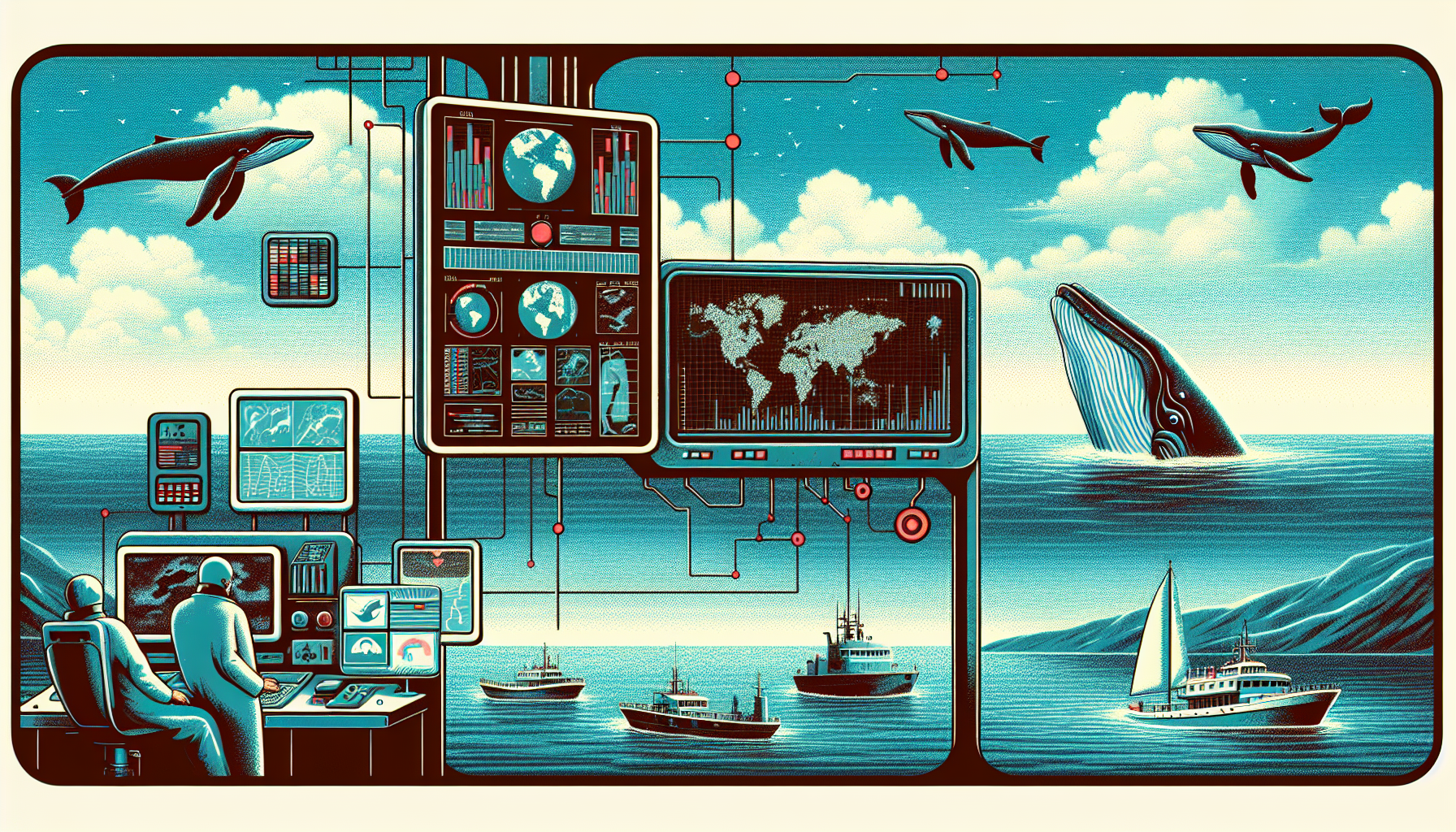In a remarkable stride for ocean conservation, scientists have introduced advanced AI tools designed to forecast where endangered whales might be found. This pioneering effort promises to greatly boost efforts to safeguard these magnificent beings and the marine habitats they call home.
AI: The New Tool for Predicting Whale Habitats
At Rutgers University, researchers have built an AI-driven tool using machine learning to sift through large amounts of data and predict the habitats of endangered whales. They are particularly focused on the critically endangered North Atlantic right whale, a species teetering on the brink with around 370 individuals left, of which merely 70 are breeding females.
This AI marvel utilizes a machine-learning system to process data accrued since 1992. It considers a wealth of factors such as seawater temperature, salinity, water current strength, chlorophyll levels, and even the specific sounds made by whales underwater. With this, it generates a “probability map” that indicates the times and places where encountering a whale is most likely. This valuable map serves as a guide for ships navigating the Atlantic, helping them steer clear of fatal encounters with these majestic giants.
Revolutionary Marine Conservation Technologies
This AI innovation is one piece of a larger ensemble of cutting-edge marine conservation technologies being rolled out worldwide. For instance, on the Pacific side of Latin America, nations like Costa Rica, Panama, Colombia, and Ecuador are employing AI and massive streams of data to guard over 2 million square kilometers of ocean habitat. The Marine Manager portal, crafted by Global Fishing Watch, merges diverse data inputs into an interactive map, thereby facilitating real-time observation and safeguarding of maritime resources.
A Holistic View of Ocean Ecosystems
The Marine Manager platform is notable for its expansive integration of varied data sources. It combines animal tracking techniques, monitoring of underwater landscapes, and environmental data to examine the effects of climatic shifts on oceanic ecosystems. Under this knowledgeable gaze, there’s been a substantial dip in harmful actions; for example, fishing operations in Costa Rica’s Cocos Marine Conservation Area dropped by an impressive 91% in the first half of 2024.
Broader Impact Across the Globe
The reach of these AI tools goes well beyond just avoiding collisions. They play a supportive role in the responsible planning and running of offshore wind farms by pinpointing the presence of whales and suggesting fitting actions. Additionally, they aid the larger blue economy, which includes industries like fishing and shipping, by ensuring sustainable use of sea waters.
Learning with Machine Power
Machine learning stands at the heart of these breakthroughs. Unlike conventional software, machine-learning models alter their own processes based on the data they ingest, fine-tuning predictions over time. This adaptability enhances the accuracy of forecasts, forging the path for more poignant conservation approaches.
Enhancing Conservation with Satellite Imagery
Beyond AI’s predictive prowess, satellite imagery plays a vital role, enlarging the scope of ocean preservation. Open satellite data from organizations like NASA and the European Space Agency aid in spotting illegal fishing activities. Exclusive computer vision models analyze various satellite images and are utilized in real-time maritime platforms like Skylight, which offers free monitoring services worldwide, enhancing global conservation endeavors.
Conclusion: Ushering in a New Era for Our Oceans
The blend of AI, machine learning, and satellite tech heralds a fresh chapter in ocean conservation. These advancements are reshaping passive marine protection into proactive, data-supported management of ocean treasures. If nurtured, these innovations could inspire upcoming marine conservation projects globally, keeping in line with the worldwide aim to protect 30% of our oceans by the year 2030.
To conclude, utilizing AI to foresee the habitats of endangered whales, along with adopting state-of-the-art marine conservation technologies, highlights the crucial need for ongoing investment in scientific inquiry and modern technology. These steps are essential not just for the protection of imperiled species but also for nurturing a sustainable and mindful exploitation of our ocean’s wealth.

Leave a Reply